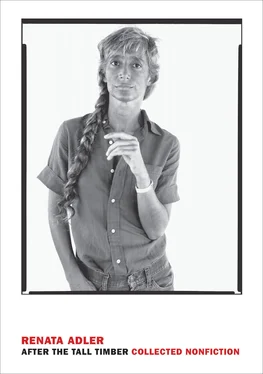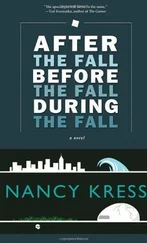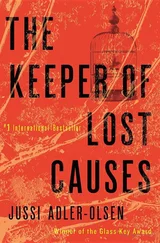“You really believe in non-violence?” the boy asked Charles.
“I do,” Charles said. “I used to think of it as just a tactic, but now I believe in it all the way. Now I’d just like to be tested.”
“Weren’t you tested enough when you were beaten on?” the boy asked.
“No, I mean an individual test, by myself,” Charles said. “It’s easy to talk about non-violence, but in a lot of cases you’ve got to be tested, and re-inspire yourself.”
By 2 A.M., hardly anyone in the camp was awake except the late-shift night security patrol and a group of radio operators in a trailer truck, which served as a base for the walkie-talkies around the campsite and in the church back in Selma. The operators kept in constant touch with Selma, where prospective marchers were still arriving by the busload. Inside the trailer were Norman Talbot, a middle-aged black man from Selma who had borrowed the trailer from his uncle and was serving as its driver (“I used to work in a junk yard, until they fired me for joining the movement. I’ve got a five-year-old daughter, but after that I made it my business to come out in a big way”); Pete Muilenberg, a nineteen-year-old white student on leave of absence from Dartmouth to work for COFO, the Congress of Federated Organizations, in Mississippi; and Mike Kenney, a twenty-nine-year-old white student who had quit graduate school at Iowa State to work for SNCC.
“SNCC isn’t officially involved in this march,” Mr. Kenney said to a marcher who visited him in the trailer early that morning. “Although individual SNCC workers can take part if they like. They say Martin Luther King and SNCC struck a bargain: SNCC wouldn’t boycott this march if SCLC would take part in a demonstration in Washington to challenge the Mississippi members of Congress. We didn’t want to bring in all these outsiders, and we wanted to keep marching on that Tuesday when King turned back. Man, there are cats in Selma now from up North saying, ‘Which demonstration are you going to? Which one is the best?’ As though it were a college prom, or something. I tell them they ought to have sense enough to be scared. ‘What do you think you’re down here for? For publicity, to show how many of you there are, and to get a few heads bashed in. Nobody needs you to lead them. SCLC has got plenty of leaders.’ People need SNCC, though, for the technicians. Some of us took a two-day course in short-wave-radio repair from one of our guys, Marty Schiff, so we could set up their radios for them. Then, a lot of SNCC cats have come over here from Mississippi, where the romance has worn off a bit and it’s time for our experts to take over — running schools, pairing off communities with communities up North, filing legal depositions against the Mississippi congressmen and against the worst of the police.
“We’re called agitators from out of state. Well, take away the connotations and agitation is what we do, but we’re not outsiders. Nobody who crosses a state line is an outsider. It’s the same with racial lines. I don’t give a damn about the Negro race, but I don’t give a damn about the white race, either. I’m interested in breaking the fetters of thought. What this march is going to do is help the Alabama Negro to break his patterns of thought. It’s also going to change the marchers when they go back home. The students who went back from the Mississippi project became dynamos. It’s easier to join the movement than to get out. You have this commitment. There will be SNCC workers staying behind to keep things going in Selma. We were here, working, a year and a half before SCLC came in. Man, there’s a cartoon in our Jackson office showing the SNCC power structure, and it’s just one big snarl. Some of us are in favor of more central organization, but most of us believe in the mystique of the local people. We’re not running the COFO project in Mississippi next summer, because of the black-white tensions in SNCC. Some of the white cats feel they’re being forced out, because of the racism. But I can understand it. The white invasion put the Negro cats in a predicament. Not even their movement was their own anymore. I’m staying with it, though. Every SNCC meeting is a traumatic experience for all of us, but even the turmoil is too real, too important, for me to get out now. It’s what you might call the dramatic-results mentality. Some of the leaders may be evolving some pretty far-out political philosophy, but it’s the workers who get things done — black-white tensions, left-right tensions, and all.”
Later that morning, Tuesday, it began to rain, and the rain continued through most of the day. When the first drops fell, whites at the roadside cheered (a Southern adage says that “a nigger won’t stay out in the rain”), but it soon became apparent that, even over hilly country, the procession was going at a more spirited pace than ever. Jim Letherer, on his crutches, appeared to be flagging. John Doar walked beside him for a while, joking and imperceptibly slowing his pace. Then Mr. Doar said, “Jim, come to the car a minute. I want to show you something back down the road.” Jim disappeared from the march. In twenty minutes, he was walking again.
Back in Selma, thousands of out-of-towners had arrived and had been quietly absorbed into the black ghetto. On the outskirts of town, a sign had appeared showing a photograph of Martin Luther King at the Highlander Folk School and captioned “Martin Luther King at Communist School.” Lying soggily upon the sidewalks were leaflets reading “An unemployed agitator ceases to agitate. Operation Ban. Selective hiring, firing, buying, selling.” The Selma Avenue Church of Christ, whose congregation is white, displayed a sign reading “When You Pray, Be Not As Hypocrites Are, Standing in the Street. Matt: 6:5,” and the Brown Chapel Church displayed a sign reading “Forward Ever, Backward Never. Visitors Welcome.” Inside the church and its parsonage, things were bustling. There were notes tacked everywhere: “If you don’t have official business here, please leave,” “All those who wish to take hot baths, contact Mrs. Lilly,” “Don’t sleep here anymore. This is an office,” “Please, the person who is trying to find me to return my suit coat and trenchcoat, not having left it in my Rambler …”
“Everyone here in town is getting antsy,” Melody Heaps, a white girl who had come in from Chicago, said to a reporter. “We’re not allowed to march until Thursday, and there’s nothing to do. On the other hand, we’re giving the Selma Negroes a chance to take it easy. They know what they’re doing, and we don’t, so they can order us around a little.”
“You know what just happened?” said a white clergyman from Ontario. “Some of those white segs splashed mud all over us. It was so funny and childish we just howled.”
A little later, two clergymen picked up their luggage and left the church for the home of Mrs. Georgia Roberts, where, they had been told, they were to spend the night.
“I guess I can put you up,” Mrs. Roberts said when they arrived. “Last night, I put up fourteen. I worked as a cook at the Selma Country Club for thirteen years, before they fired me for joining the movement. I’ve been friendly to all the other guests, so I guess you’ll find me friendly, too. I never thought I’d see the day when we’d dare to march against the white government in the Black Belt of Alabama.”
At the Tuesday-night campsite, a farm owned by the A. G. Gastons, a Birmingham black family who had become millionaires in various businesses, the ground was so wet that the marchers could walk through the clay-like mud only by moving their feet as though they were skating. A black family living in the middle of the property had received several intimidating phone calls during the day, and as a consequence, they barred their house to marchers. They held a party in their little front garden to watch the goings on.
Читать дальше






![Джеффри Арчер - The Short, the Long and the Tall [С иллюстрациями]](/books/388600/dzheffri-archer-the-short-the-long-and-the-tall-s-thumb.webp)





